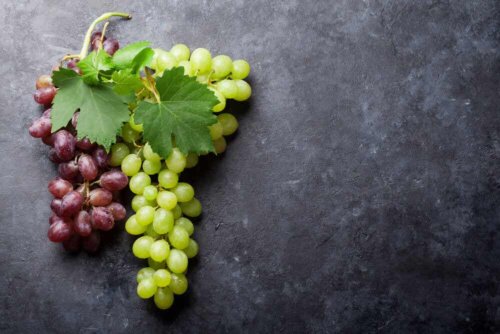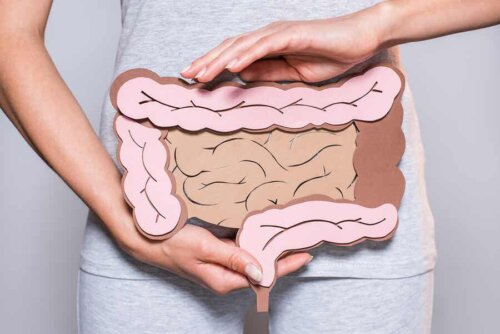The Characteristics of Antinutrients


Written and verified by the nutritionist Saúl Sánchez Arias
Antinutrients are compounds that interfere with the absorption of substances in the intestine and they can be natural or synthetic. Furthermore, they’ve been the focus of research in recent years because several foods and beverages we regularly consume contain them.
These elements are present in nature and they’re not harmful to the body. What are the most common ones? What should you know about them? Continue reading to find out.
Main antinutrients in foods and beverages
Antinutrients baffle people who try to stick to a healthy diet. However, the benefits of foods containing these substances outweigh any possible negative effects. At least according to an article published by the Harvard School of Public Health.
Tannins
These are types of polyphenols that hinder the absorption of some proteins or iron. They’re present in grapes, which are rich in resveratrol, and often have a bitter taste. However, they contain antioxidant properties that are essential for health despite their iron-chelating power.
Moreover, their consumption seems to help prevent cardiovascular disease, according to an article published in the British Journal of Pharmacology. This is why you must include these substances in your diet.
You must also ensure a regular intake of iron and vitamin C, through the inclusion of other foods, so as not to experience complications related to anemia.
The intake of large amounts of tannins could be a risk factor for vegans. This is because vegetable iron has a lower bioavailability than animal iron in itself. Thus, it’s necessary to monitor the intake of this mineral in diets without animal products.
In short, it’s best to increase the intake of vitamin C in this type of diet, as well as to space out foods abundant in vegetable iron from those containing tannins.

Phytic acid
This is mainly present in seeds, grains, nuts, and certain legumes. Its consumption might have an impact on the absorption of zinc, iron, and calcium. In addition, it can inhibit some digestive enzymes linked to proteolysis.
However, it helps control the glucose curve and reduce insulin resistance. It could also reduce the risk of developing fatty liver, according to a study published in 2016.
For now, human trials are still lacking in order to provide solid evidence in this regard. It’s clear that this substance has positive health implications though.
You may be interested in What Are the Risks of Mixing Certain Foods?
Calcium oxalate
This substance is present in certain green leafy vegetables. It binds calcium and can reduce its absorption. In addition, it can also interfere with other minerals such as iron or magnesium.
As if this wasn’t enough, its excessive intake might promote kidney stones. However, these are actually due to dehydration and, possibly, to a certain genetic conditioning factor.
In addition, biodiversity in the intestinal microbiota can significantly reduce the risk of this type of ailment. Bacteria of the genus Lactobacillus are responsible for preventing the formation of stones by degrading oxalate salts, according to a review published in Microbial Pathogenesis.
Fiber
Excessive fiber intake may interfere with the absorption of some nutrients from the diet. It delays glucose absorption and partially blocks cholesterol absorption when ingested in normal amounts. However, it may interfere with protein absorption in higher proportions.
This substance is necessary for any diet though. This is because it improves the management of the satiety mechanism in addition to reducing the problems associated with intestinal transit.
Moreover, its consumption is related to the selective growth of the microbiota from fermentation processes. Cardiovascular risk also decreases when the dietary fiber intake is adequate.

Read about Five Essential Nutrients for a Healthy Diet
A varied diet will help you feel good about antinutrients
Antinutrients are substances that can interfere with the absorption of certain compounds at the intestinal level. However, they’re necessary for a healthy body in many cases. Thus, they must be a part of your diet.
The best thing you can do is stick to a well-balanced wholesome diet. It’ll ensure a supply of all the nutrients your body needs and reduce the possible effect of anti-nutrients.
One strategy to accomplish this is to mind your fiber intake. It’s a great way for the satiety mechanism to function optimally, which will reduce appetite and, in turn, snacking between meals.
All cited sources were thoroughly reviewed by our team to ensure their quality, reliability, currency, and validity. The bibliography of this article was considered reliable and of academic or scientific accuracy.
- Xia N., Daiber A., Forstermann U., Li H., Antioxidant effects of resveratrol in the cardiovascular system. Br J Pharmacol, 2017. 174 (12): 1633-1646.
- Sekita A., Okazaki Y., Katayama T., Dietary phytic acid prevents fatty liver by reducing expression of hepatic lipogenic enzymes and modulates gut microbiota in rats fed a high sucrose diet. Nutrition, 2016. 32(6): 720-2.
- Sadaf H., Irfan Raza S., Waqas Hassan S., Role of gut microbiota against calcium oxalate. Microb Pathog, 2017. 109: 287-291.
This text is provided for informational purposes only and does not replace consultation with a professional. If in doubt, consult your specialist.








